S100P interacts with integrin α7 and increases cancer cell migration and invasion in lung cancer
- PMID: 26320193
- PMCID: PMC4745748
- DOI: 10.18632/oncotarget.4987
S100P interacts with integrin α7 and increases cancer cell migration and invasion in lung cancer
Abstract
S100P, a Ca2+ binding protein, has been shown to be overexpressed in various cancers. However, its functional character in lung cancer remains largely unknown. In this study, we show that S100P increases cancer migration, invasion and metastasis in lung cancer cells. Ectopic expression of S100P increases migration, invasion and EMT in less invasive CL1-0 lung cancer cells. Conversely, knockdown of S100P suppressed migration and invasion, and caused a reversion of EMT in highly invasive lung cancer cells. These effects were transduced by increasing the interaction of S100P with integrin α7, which activated focal adhesion kinase (FAK) and AKT. Blocking FAK significantly decreased S100P-induced migration by decreasing Src and AKT activation, whereas inhibiting AKT reduced S100P upregulation on ZEB1 expression. Further study has indicated that S100P knockdown prevents the spread of highly metastatic human lung cancer in animal models. This study therefore suggests that S100P represents a critical activator of lung cancer metastasis. Detection and targeted treatment of S100P-expressing cancer is an attractive therapeutic strategy in treating lung cancer.
Keywords: FAK; S100P; ZEB1; metastasis; oncogene.
Conflict of interest statement
The authors declare that they have no competing interests.
Figures
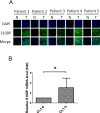
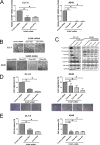
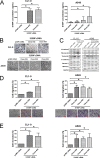

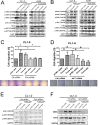
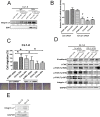
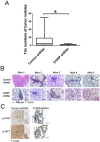
Similar articles
-
The microRNA-200/Zeb1 axis regulates ECM-dependent β1-integrin/FAK signaling, cancer cell invasion and metastasis through CRKL.Sci Rep. 2016 Jan 5;6:18652. doi: 10.1038/srep18652. Sci Rep. 2016. PMID: 26728244 Free PMC article.
-
Galectin-1 promotes lung cancer tumor metastasis by potentiating integrin α6β4 and Notch1/Jagged2 signaling pathway.Carcinogenesis. 2013 Jun;34(6):1370-81. doi: 10.1093/carcin/bgt040. Epub 2013 Feb 6. Carcinogenesis. 2013. PMID: 23389289
-
S100P dissociates myosin IIA filaments and focal adhesion sites to reduce cell adhesion and enhance cell migration.J Biol Chem. 2012 May 4;287(19):15330-44. doi: 10.1074/jbc.M112.349787. Epub 2012 Mar 6. J Biol Chem. 2012. PMID: 22399300 Free PMC article.
-
S100P: a novel therapeutic target for cancer.Amino Acids. 2011 Oct;41(4):893-9. doi: 10.1007/s00726-010-0496-4. Epub 2010 May 28. Amino Acids. 2011. PMID: 20509035 Free PMC article. Review.
-
S100P, a peculiar member of S100 family of calcium-binding proteins implicated in cancer.Acta Virol. 2013;57(2):238-46. doi: 10.4149/av_2013_02_238. Acta Virol. 2013. PMID: 23600880 Review.
Cited by
-
S100P promotes trophoblast syncytialization during early placenta development by regulating YAP1.Front Endocrinol (Lausanne). 2022 Sep 14;13:860261. doi: 10.3389/fendo.2022.860261. eCollection 2022. Front Endocrinol (Lausanne). 2022. PMID: 36187124 Free PMC article.
-
Interplay between Trx-1 and S100P promotes colorectal cancer cell epithelial-mesenchymal transition by up-regulating S100A4 through AKT activation.J Cell Mol Med. 2018 Apr;22(4):2430-2441. doi: 10.1111/jcmm.13541. Epub 2018 Jan 31. J Cell Mol Med. 2018. PMID: 29383839 Free PMC article.
-
Calcium-Binding Protein S100P Promotes Tumor Progression but Enhances Chemosensitivity in Breast Cancer.Front Oncol. 2020 Sep 15;10:566302. doi: 10.3389/fonc.2020.566302. eCollection 2020. Front Oncol. 2020. PMID: 33042844 Free PMC article.
-
Cancer-associated S100P protein binds and inactivates p53, permits therapy-induced senescence and supports chemoresistance.Oncotarget. 2016 Apr 19;7(16):22508-22. doi: 10.18632/oncotarget.7999. Oncotarget. 2016. PMID: 26967060 Free PMC article.
-
A Novel Gene Signature based on Immune Cell Infiltration Landscape Predicts Prognosis in Lung Adenocarcinoma Patients.Curr Med Chem. 2024;31(38):6319-6335. doi: 10.2174/0109298673293174240320053546. Curr Med Chem. 2024. PMID: 38529604
References
-
- Kratz JR, He J, Van Den Eeden SK, Zhu ZH, Gao W, Pham PT, Mulvihill MS, Ziaei F, Zhang H, Su B, Zhi X, Quesenberry CP, Habel LA, Deng Q, Wang Z, Zhou J, Li H, Huang MC, Yeh CC, Segal MR, Ray MR, Jones KD, Raz DJ, Xu Z, Jahan TM, Berryman D, He B, Mann MJ, Jablons DM. A practical molecular assay to predict survival in resected non-squamous, non-small-cell lung cancer: development and international validation studies. Lancet. 2012;379:823–832. - PMC - PubMed
-
- Medford-Davis L, Decamp M, Recht A, Flickinger J, Belani CP, Varlotto J. Surgical management of early-stage non-small cell lung carcinoma and the present and future roles of adjuvant therapy: a review for the radiation oncologist. Int J Radiat Oncol Biol Phys. 2012;84:1048–1057. - PubMed
-
- Hu H, Zhang Q, Huang C, Shen Y, Chen X, Shi X, Tang W. Diagnostic value of S100P for pancreatic cancer: a meta-analysis. Tumour Biol. 2014;35:9479–9485. - PubMed
Publication types
MeSH terms
Substances
LinkOut - more resources
Full Text Sources
Other Literature Sources
Medical
Miscellaneous

